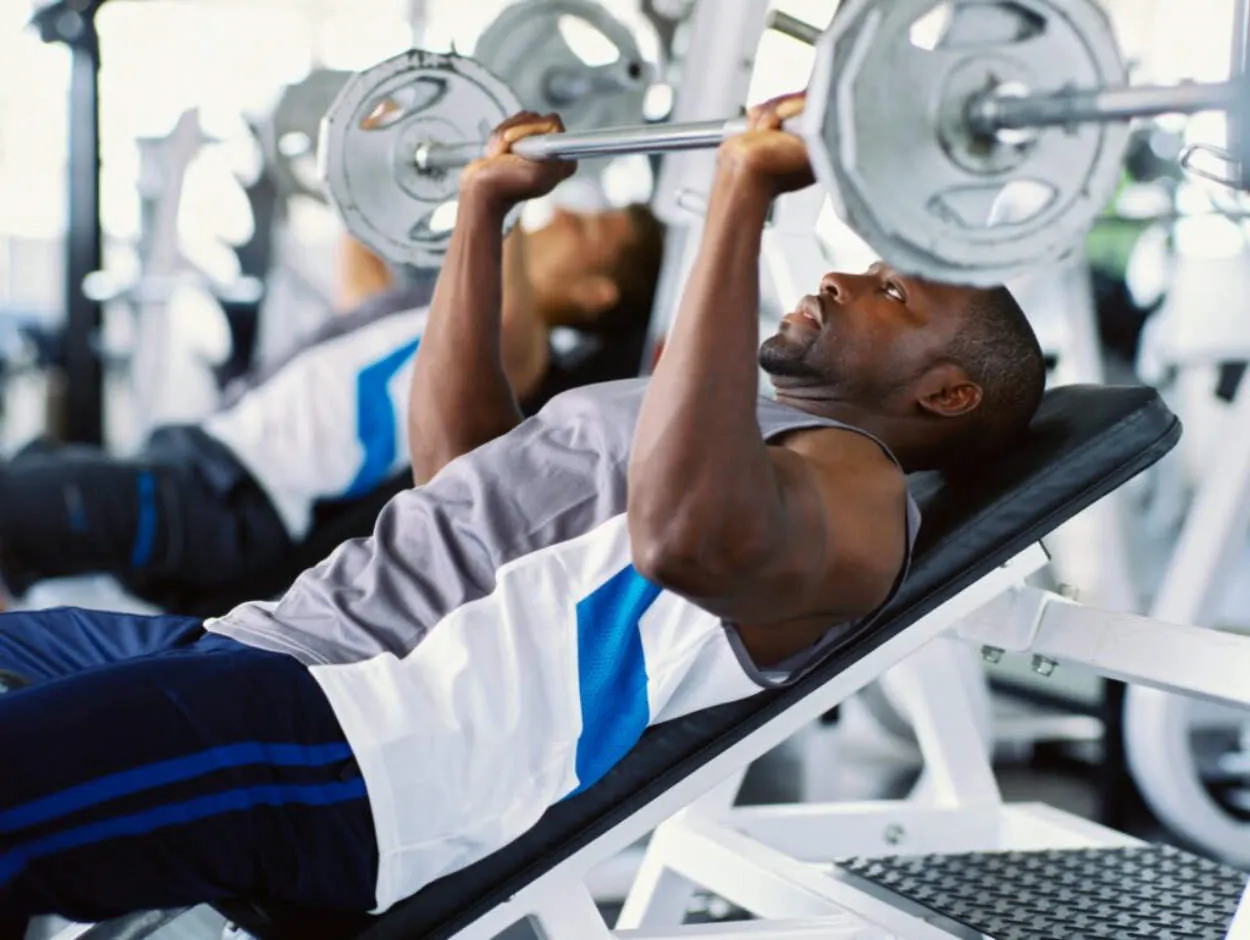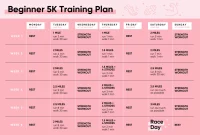Are you looking to improve your athletic performance? Look no further! In this article, we will explore smart training techniques that are perfect for athletes of all levels. Whether you’re a seasoned pro or just starting out, these tips and strategies will help you reach your full potential and achieve your goals. Get ready to take your training to the next level with these smart techniques!
Incorporating Cross-Training in Your Regimen
When it comes to improving athletic performance, incorporating cross-training into your training regimen can be highly beneficial. Cross-training involves participating in various exercises and activities that complement your primary sport or fitness routine. By engaging in different forms of physical training, you can enhance your overall fitness, prevent injury, and break through training plateaus.
One of the key advantages of cross-training is its ability to target different muscle groups that may not be fully addressed in your primary sport. For example, if you are a runner, including activities such as swimming or cycling in your routine can strengthen your upper body and improve cardiovascular endurance. This balanced approach helps to prevent muscle imbalances, which can lead to overuse injuries and hinder performance.
Furthermore, cross-training allows you to vary the intensity and impact on your joints. If you regularly engage in high-impact activities like running or jumping, incorporating low-impact exercises like yoga or pilates can help in reducing the stress on your joints while still providing a challenging workout. This can prolong your athletic career by minimizing the risk of overuse injuries and ensuring that you can continue to train consistently.
Another advantage of cross-training is its ability to prevent mental burnout. By constantly switching up your workouts and trying new activities, you can keep things exciting and fresh. This variety not only helps to maintain motivation but also prevents the monotony that often comes with repetitive training. Moreover, cross-training allows you to develop a well-rounded skill set by challenging different movement patterns and skills, improving overall athleticism.
It is important to note that when incorporating cross-training into your regimen, you should choose activities that complement your primary sport or fitness goals. Consider your strengths, weaknesses, and areas that require improvement, then select exercises that target those areas. Additionally, ensure that you allocate sufficient time for each component of your training to ensure a balanced approach.
In conclusion, cross-training is a valuable technique that can benefit every athlete. By diversifying your training routine, you can enhance overall fitness, prevent injuries, and avoid mental burnout. So, whether you are a seasoned athlete or just starting out, consider incorporating cross-training into your regimen for optimal performance and long-term athletic success.
The Importance of Flexibility and Balance Training
Flexibility and balance training are essential components in any athlete’s training routine. These two elements not only enhance performance but also reduce the risk of injuries. Incorporating flexibility and balance exercises into your training program can provide numerous benefits.
Improved Range of Motion
Flexibility training focuses on improving the range of motion in your joints and muscles. By regularly stretching and performing exercises that target flexibility, athletes can increase their overall range of motion. This improved flexibility allows for greater movement efficiency and reduces the risk of muscle strains or tears during physical activities.
Enhanced Performance
Having good flexibility and balance can greatly enhance an athlete’s performance. With increased range of motion and control over movements, athletes can perform skills and techniques more effectively. Whether it’s executing precise movements in gymnastics or maintaining stability during a soccer match, flexibility and balance play a crucial role in optimizing performance.
Reduced Risk of Injuries
Flexibility and balance training also help lower the chances of injuries. Tight muscles and limited range of motion can predispose athletes to injuries such as strains, sprains, and even fractures. By incorporating exercises that improve flexibility and balance, athletes can mitigate these risks by increasing their overall body control and stability.
Improved Recovery and Rehabilitation
Flexibility and balance training are also vital for recovery and rehabilitation after injuries. Maintaining flexibility can aid in the recovery process by promoting blood flow, reducing muscle soreness, and improving joint mobility. Additionally, balance exercises can assist athletes in regaining stability and strengthening weakened muscles after an injury.
Ongoing Maintenance and Longevity
Flexibility and balance training should not be limited to athletes alone. Incorporating these exercises into your fitness routine can contribute to overall physical well-being as you age. Maintaining flexibility and balance helps prevent age-related issues such as joint stiffness and loss of coordination.
In conclusion, the importance of flexibility and balance training cannot be overstated. These elements have wide-ranging benefits for athletes, including improved range of motion, enhanced performance, reduced risk of injuries, improved recovery and rehabilitation, as well as ongoing maintenance and longevity. Incorporate flexibility and balance exercises into your training program for optimal physical fitness and overall well-being.
Using Technology to Enhance Training
In the world of sports, training is a vital component for every athlete striving to reach their full potential. With the rapid advances in technology, athletes now have a wealth of resources at their disposal to amplify their training efforts and achieve superior results.
1. Wearable Technology
One way technology has revolutionized training is through the use of wearable devices. These smart gadgets, such as fitness trackers and heart rate monitors, provide athletes with real-time data on their performance, allowing them to monitor their progress and make necessary adjustments to their training routines. With access to information like heart rate zones, sleep patterns, and calories burned, athletes can optimize their workouts and minimize the risk of overtraining.
2. Virtual Reality
Virtual reality (VR) is another technological breakthrough that has made its way into the realm of sports training. VR allows athletes to immerse themselves in realistic simulation environments, enhancing their mental focus and reaction time. For example, a basketball player can practice shooting free throws in a virtual stadium, replicating the pressure of a real game. By incorporating VR into their training regimen, athletes can improve their decision-making abilities and prepare for high-pressure situations.
3. Performance Tracking Software
Performance tracking software has become an invaluable tool for athletes and coaches alike. These applications allow athletes to record and analyze their training sessions, capturing data such as speed, distance, and technique. By analyzing this data, athletes can identify areas for improvement and make necessary adjustments to their technique or strategy. Coaches can also use performance tracking software to monitor their athletes remotely, providing feedback and guidance even when physically apart.
4. Biomechanical Analysis
Advancements in technology have enabled biomechanical analysis, a method used to analyze an athlete’s movement and technique. High-speed cameras, motion sensors, and force plates are used to capture and analyze an athlete’s every move. This detailed analysis helps athletes understand their biomechanics and make corrections to optimize their performance. By refining their technique, athletes can achieve better efficiency, reduce the risk of injury, and ultimately enhance their overall performance.
5. Communication and Collaboration Platforms
In today’s interconnected world, technology has made it easier for athletes to communicate and collaborate with their coaches and teammates. Online platforms provide secure and efficient channels for sharing training plans, discussing strategies, and providing feedback. Athletes can receive guidance from experts around the globe and benefit from a wide range of perspectives. This enhanced communication and collaboration contribute to a more holistic and effective training experience.
Psychological Techniques for Performance Improvement
In the world of sports, performance improvement is a constant pursuit for athletes at every level. While physical training methods are crucial, it is equally important to acknowledge the role of psychology in enhancing athletic performance. Here are some psychological techniques that can help athletes reach their full potential:
1. Visualization
Visualization involves mentally rehearsing the desired performance. By vividly imagining successfully executing a skill or achieving a goal, athletes can enhance their confidence and develop a strong mental blueprint of what needs to be done.
2. Positive Self-Talk
The power of self-talk cannot be underestimated. By replacing negative thoughts with positive affirmations, athletes can boost their self-confidence and maintain a focused mindset. Encouraging phrases and reminders of past successes can be repeated silently or spoken aloud.
3. Goal Setting
Setting clear and achievable goals is essential for athletes. By breaking down larger objectives into smaller, measurable targets, individuals can maintain motivation and track their progress. It is crucial to ensure that goals are realistic and specific to enhance focus and commitment.
4. Emotional Regulation
Managing emotions under pressure is vital in sports. Techniques such as deep breathing, mindfulness, and progressive muscle relaxation can help athletes stay calm and composed. By learning to regulate their emotions effectively, athletes can optimize their performance and make better decisions during critical moments.
5. Mental Rehearsal
Mental rehearsal involves mentally practicing a performance repeatedly. Athletes can visualize themselves successfully executing skills, tactics, or strategies. This technique helps enhance muscle memory, decision-making, and overall confidence when faced with real situations in competition.
6. Focus and Concentration
The ability to concentrate amid distractions is essential for optimal performance. Techniques such as narrowing attention, using keywords, and focusing on the present moment can help athletes maintain a heightened state of concentration. By eliminating external distractions and staying fully present, athletes can perform at their best.
By incorporating these psychological techniques into their training and preparation, athletes can unlock their true potential, improve performance, and achieve their goals. Remember, the mind is just as important as the body when it comes to succeeding in the world of sports.
The Role of Rest Days and Active Recovery
In the world of sports and athletic training, rest days and active recovery play crucial roles in optimizing performance and preventing injuries. While intense workouts and rigorous training regimes are essential, it is equally important to prioritize sufficient rest and recovery time.
Rest days are designated periods where athletes take a break from their training programs to allow their body to recuperate and rebuild. These days are not synonymous with laziness or inactivity; instead, they provide an opportunity for the body to repair the damage caused by intense exercise and rebuild stronger muscles.
Active recovery, on the other hand, refers to engaging in low-intensity activities to promote blood circulation, enhance muscle recovery, and relieve soreness. This can involve activities like light jogging, swimming, or practicing yoga. Active recovery allows for a gentle movement that helps flush out lactic acid, reduce post-workout stiffness, and accelerate the regeneration process.
Rest days and active recovery bring several benefits to athletes. Firstly, they prevent overtraining, which can lead to burnout, decreased performance, and increased risk of injury. By giving the body adequate time to recover, athletes can avoid the negative effects of overexertion.
Secondly, rest days and active recovery promote muscle growth and repair. During exercise, tiny tears occur in the muscles, and it is during rest and recovery that these tears are repaired and strengthened. This process, known as muscle protein synthesis, is essential for muscle growth and increased strength.
In addition to physical benefits, rest days can also provide mental and emotional benefits. Taking a break from rigorous training can help reduce stress, prevent mental fatigue, and improve overall well-being. It allows athletes to recharge both physically and mentally, enhancing their motivation and focus when they return to training.
It is important for athletes to listen to their bodies and prioritize rest and recovery as part of their training routine. Incorporating regular rest days and active recovery sessions into training programs can lead to improved performance, injury prevention, and overall athletic success.
Conclusion
In conclusion, smart training techniques offer valuable strategies for athletes of all levels. By incorporating elements such as goal-setting, periodization, and proper recovery, athletes can optimize their training and improve performance. Additionally, the use of technology and data analysis can provide valuable insights and help athletes make informed decisions. Ultimately, a holistic approach to training that focuses on both physical and mental aspects is key to achieving success in sports.




